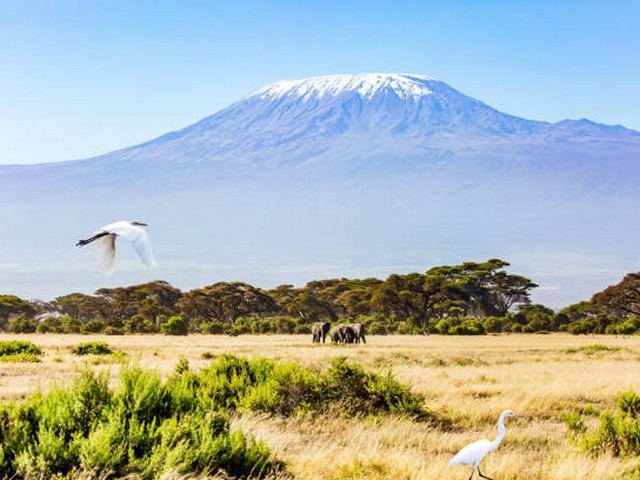How To Manage Cold Weather On Kilimanjaro: Tips From The Top
Standing as a beacon of adventure, Mount Kilimanjaro beckons trekkers and explorers from all corners of the globe. But while the views from Africa's highest peak are undoubtedly breathtaking, the cold weather on Kilimanjaro can pose a significant challenge. At Kilimanjaro Centre for Trekking and Ecotourism (KCTE), we understand that a successful summit not only requires courage and determination but also proper preparation for the icy conditions. In this guide, we'll share expert tips on how to effectively manage the cold weather on Kilimanjaro, ensuring your climb is as comfortable as possible.
Why Managing Cold Weather is Crucial on Kilimanjaro
Mount Kilimanjaro's unique ecosystem means you'll journey through five distinct climate zones—each colder and harsher as you ascend. The temperatures can drop below freezing, especially at night and during the final push to the summit. Understanding how to handle these conditions is crucial; it can be the difference between a memorable adventure and a challenging ordeal.
Proper Gear: Your First Line of Defense
Choose the Right Clothing
Layering is the mantra for Kilimanjaro's unpredictable weather. Start with a moisture-wicking base layer that keeps sweat away from your body. Add an insulating middle layer, such as fleece or down, to retain body heat. The outer layer should be windproof and waterproof yet breathable. This combination allows flexibility to add or remove layers according to the changing weather.
Footwear Matters
Insulated, waterproof hiking boots are essential. They should be comfortable, well-broken-in, and supportive enough to handle rocky terrains. Pair them with thermal socks to prevent cold feet—a potential trip spoiler.
Don't Forget Accessories
A good quality hat, thermal gloves, and a neck gaiter can protect against heat loss from your head and neck. High-quality sunglasses and sunscreen are also vital, as UV exposure increases with altitude.
Nutrition and Hydration: Fueling for Warmth
Caloric Intake
Your body burns more calories in cold weather, especially at high altitude. Ensure you're consuming enough high-energy, nutritious food to keep your body fueled and warm. Meals rich in carbohydrates and proteins are excellent for sustained energy.
Stay Hydrated
Dehydration hastens the onset of hypothermia. Drinking warm water can help maintain your core body temperature and prevent freezing of your water supply. Carry insulated water bottles or a thermos, and avoid excessive caffeine.
Acclimatization: The Slow and Steady Rule
Slow, gradual ascent is key in allowing your body to adapt to lower oxygen levels and colder temperatures. KCTE's itineraries are designed to maximize acclimatization, with built-in days for rest and shorter treks. This not only enhances your summit chances but also helps your body cope better with the cold.
Physical Conditioning: Preparing Your Body
The fitter you are, the better your body can handle the strain of climbing and cold. Prioritize cardiovascular exercises, strength training, and hikes in cold conditions if possible. This will acclimate your body to exerting in cold weather.
Nighttime Strategies: Sleeping Warm
Choose the Right Sleeping Gear
Invest in a four-season sleeping bag rated for temperatures lower than you expect. A sleeping bag liner can add extra warmth. Also, use an insulated sleeping pad as it provides a barrier against the cold ground.
Warm Before You Sleep
Engaging in light exercise, like walking around camp before bed, can boost your body temperature. Also, a warm drink can help raise your internal temperature before you tuck in for the night.
Summit Night: The Final Push
Summit night is notoriously the coldest part of the climb. Wear all your layers, and keep pace steady to maintain body heat. Hand and foot warmers can be a game-changer during this final ascent.
Embrace the Experience
Remember, every step on this mighty mountain is a story in the making. Embrace the cold as part of the Kilimanjaro adventure. With each breath of crisp air and crunch of snow underfoot, you're building memories that will warm your heart for a lifetime.
Why Book With Kilimanjaro Centre For Trekking and Ecotourism (KCTE)?
At KCTE, we pride ourselves on providing expertly guided tours up Kilimanjaro with a focus on safety, enjoyment, and environmental sustainability. Our guides are trained to help you manage the cold effectively, ensuring you have a memorable and successful climb.
Ready to conquer Kilimanjaro? Contact us today to book your adventure with experts who care deeply about your experience and the mountain's delicate ecosystem.
FAQs
What is the best time of year to climb Kilimanjaro for warmer weather?
The warmest months to climb Kilimanjaro generally are from December to February. However, these are also some of the busiest months on the mountain.
How cold does it get on Kilimanjaro?
Temperatures can range from 20°C at the base to below -20°C at the summit. Wind chill can make it feel much colder.
Can I rent cold weather gear?
Yes, KCTE offers high-quality rental gear specifically suited for Kilimanjaro's temperatures. This includes insulated jackets, pants, boots, and sleeping bags.
How important is acclimatization for managing cold?
Very important. Proper acclimatization reduces your risk of altitude sickness and makes it easier for your body to adjust to colder temperatures.
By preparing thoroughly and following expert advice, you can manage the cold effectively and enjoy the majestic beauty of Kilimanjaro. Join us at KCTE, where your dream climb becomes a reality with warmth and safety at its heart.




